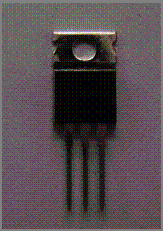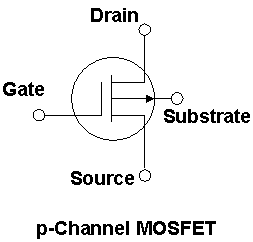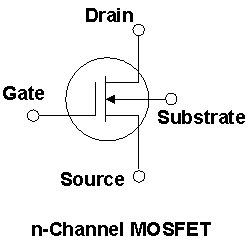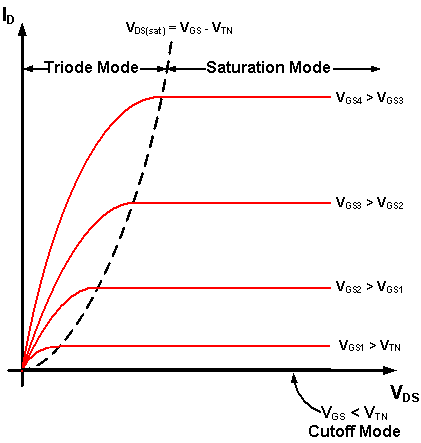How an n-Channel MOSFET works
E-Lab > How an n-Channel MOSFET works
Field Effect Transistor (FET) is a Semiconductor device with four terminals (Gate, Source, Drain and Substrate), Figure 1. FET is a Unipolar device because Current is produced by one type of Charge Carrier (Electrons or Holes) depending on the type of FET (n-Channel or p-Channel), unlike the Bipolar Junction Transistor (BJT), in which Current is produced by both Electrons and Holes. Metal Oxide Semiconductor FET (MOSFET) is a category of FET. The MOSFET schematic symbols, Figure 2 and Figure 3, have an arrowhead which indicates the polarity of the p-n Junction between the Substrate and the Channel. The following explanation focuses on the n-Channel Enhancement Mode MOSFET.

Figure 1: Field Effect Transistor

Figure 2: Schematic symbol of a p-Channel MOSFET

Figure 3: Schematic symbol of a n-Channel MOSFET
MOSFET can operate in three different modes: Cutoff Mode, Triode Mode and Saturation Mode, Figure 4. Table 1 is a summary of the three Operation Modes of an n-Channel Enhancement Mode MOSFET.

Figure 4: ID–VDS Characteristic Curves of an n-Channel Enhancement Mode MOSFET
The MOSFET is very important in electronics. They are used extensively in other Exhibits, especially as Amplifiers in analog circuit and Electronic Switches in digital circuit.
E-Lab > How an n-Channel MOSFET works
